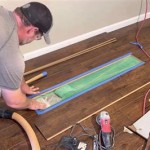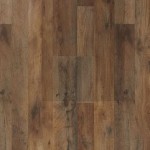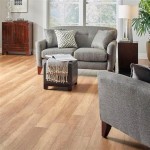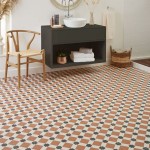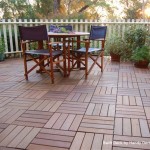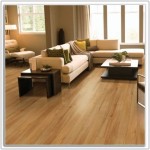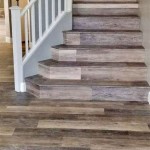How Much Does Vinyl Flooring Cost For 1000 Square Feet?
Determining the cost of vinyl flooring for a 1000-square-foot area requires consideration of multiple factors. These factors include the type of vinyl flooring selected, the quality of the materials, the complexity of the installation, and the geographical location. A comprehensive understanding of these elements is necessary to accurately estimate the total expense associated with a vinyl flooring project of this scale.
Vinyl flooring has emerged as a popular choice for both residential and commercial spaces due to its durability, water resistance, ease of maintenance, and aesthetic versatility. It is manufactured in various forms, each with its own price point and installation requirements. Therefore, a detailed examination of the different types of vinyl flooring is crucial to establishing a realistic budget.
Understanding the Types of Vinyl Flooring and Their Associated Costs
The vinyl flooring market offers several distinct types, each characterized by varying material compositions, construction methods, and performance attributes. Sheet vinyl, vinyl tiles, and luxury vinyl planks (LVP) or tiles (LVT) represent the most common options, and their respective costs differ significantly.
Sheet vinyl, sold in large rolls, generally represents the most economical option per square foot. Its seamless installation minimizes the risk of water damage and creates a uniform appearance. The cost of sheet vinyl typically ranges from $1 to $5 per square foot, excluding installation. This price range is influenced by factors such as the thickness of the vinyl layer, the complexity of the pattern, and the presence of special coatings or treatments designed to enhance durability or stain resistance.
Vinyl tiles offer greater design flexibility than sheet vinyl, allowing for the creation of intricate patterns and custom layouts. Standard vinyl tiles are typically less expensive than LVP or LVT, with prices ranging from $2 to $7 per square foot. However, the cost can increase if specialty tiles, such as those with textured surfaces or unique shapes, are selected. Installation costs for vinyl tiles can also vary depending on the complexity of the pattern and the need for precise alignment.
Luxury vinyl planks (LVP) and luxury vinyl tiles (LVT) are designed to replicate the appearance of natural materials such as hardwood or stone. These products are typically thicker and more durable than standard vinyl tiles or sheet vinyl, and they often feature embossed surfaces that enhance their realistic texture. The cost of LVP and LVT typically ranges from $3 to $10 per square foot, representing a more significant investment than other types of vinyl flooring. The higher price reflects the superior quality of the materials, the enhanced durability, and the more realistic aesthetic appearance.
For a 1000-square-foot area, the material cost for sheet vinyl could range from $1,000 to $5,000. For standard vinyl tiles, the material cost might range from $2,000 to $7,000. LVP or LVT would likely result in a material cost ranging from $3,000 to $10,000. These figures represent the cost of the materials only and do not include the cost of installation, underlayment, or other associated expenses.
Accounting for Installation Costs
Installation costs represent a significant portion of the overall expense associated with vinyl flooring projects. These costs can vary widely depending on the complexity of the installation, the condition of the subfloor, and the prevailing labor rates in the geographical area. Professional installation typically involves preparing the subfloor, applying adhesive (if necessary), laying the vinyl flooring, and finishing the edges and transitions.
The cost of professional installation typically ranges from $1 to $5 per square foot. Factors that can influence the installation cost include the presence of obstacles such as cabinets or appliances, the need for significant subfloor repairs or leveling, and the complexity of the chosen pattern or design. Sheet vinyl installations, while generally less expensive in terms of materials, can sometimes require more specialized skills and equipment, potentially increasing the installation cost.
For a 1000-square-foot area, the installation cost could range from $1,000 to $5,000. This figure is an estimate and can vary depending on the specific circumstances of the project. It is essential to obtain multiple quotes from qualified flooring installers to compare pricing and ensure that the estimates accurately reflect the scope of work.
DIY installation is an option for homeowners with experience in flooring projects. While this can save on labor costs, it is important to consider the potential for errors and the need for specialized tools. Improper installation can lead to issues such as bubbling, warping, and premature wear, ultimately requiring costly repairs or replacement. Furthermore, warranties may be voided if the flooring is not professionally installed.
In addition to the labor cost, other installation-related expenses may include the cost of removing existing flooring, disposing of old materials, and purchasing underlayment or adhesives. These expenses should be factored into the overall budget to avoid unexpected costs.
Considering Additional Factors Affecting the Total Cost
Beyond the cost of materials and installation, several other factors can influence the total cost of a vinyl flooring project. These factors include the condition of the subfloor, the need for underlayment, the cost of moving furniture, and the potential for unexpected repairs or modifications.
The condition of the subfloor is a critical factor. A smooth, level, and structurally sound subfloor is essential for a successful vinyl flooring installation. If the subfloor is uneven, damaged, or contaminated with moisture, it may need to be repaired or replaced before the new flooring can be installed. Subfloor repairs can add significantly to the overall cost of the project, potentially exceeding the cost of the flooring itself.
Underlayment can provide additional cushioning, sound insulation, and moisture protection. While not always required, underlayment can enhance the performance and longevity of the vinyl flooring, particularly in areas with high traffic or moisture exposure. The cost of underlayment varies depending on the type of material and its thickness, but it typically ranges from $0.50 to $2 per square foot.
Moving furniture and appliances can also add to the overall cost of the project. If the homeowner is unable to move these items themselves, they may need to hire a professional moving company. The cost of moving furniture can vary depending on the size and weight of the items, the distance they need to be moved, and the complexity of the move.
Unexpected repairs or modifications can also arise during the installation process. For example, hidden plumbing or electrical issues may be uncovered when the old flooring is removed. These issues may require immediate attention, potentially adding to the overall cost of the project. It is always prudent to set aside a contingency fund to cover unexpected expenses.
Geographic location can also play a role in determining the cost of vinyl flooring. Labor rates and material prices can vary significantly from one region to another. Areas with higher costs of living typically have higher labor rates, while areas with limited access to materials may have higher material prices.
Finally, the quality of the vinyl flooring itself can significantly impact the overall cost. Higher-quality vinyl flooring is typically more durable, longer-lasting, and more resistant to wear and tear. While it may represent a larger upfront investment, higher-quality flooring can save money in the long run by reducing the need for repairs or replacements. It is important to carefully consider the quality of the vinyl flooring and its suitability for the intended use.
In summary, estimating the cost of vinyl flooring for 1000 square feet involves careful consideration of the type of vinyl flooring, installation costs, subfloor condition, underlayment requirements, the need for furniture moving, potential unexpected repairs, geographic location, and material quality. Obtaining multiple quotes from qualified flooring installers and carefully factoring in all associated expenses is crucial for creating an accurate budget.

Fixr Com Cost To Install Vinyl Flooring

Fixr Com Cost To Install Vinyl Plank Flooring S

What S The Cost To Install Vinyl Plank Flooring Floorings

Cost To Install Vinyl Floors The Home Depot

Fixr Com Cost To Install Vinyl Flooring

Fixr Com Luxury Vinyl Tile Cost To Install Lvt Flooring

Vinyl Plank Flooring S And Installation Cost 2024

The Complete Guide To Flooring Costs By Type Twenty Oak

Fixr Com Cost To Install Vinyl Flooring
How Much Does It Cost To Install 1 000 Square Feet Of Vinyl Floors Quora
Related Posts

